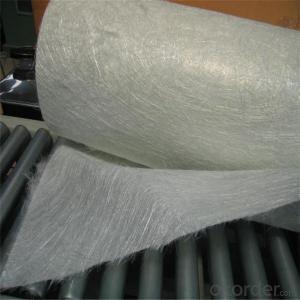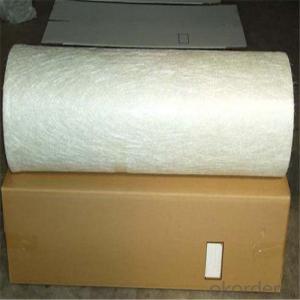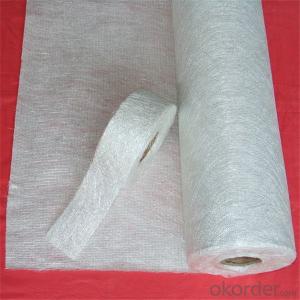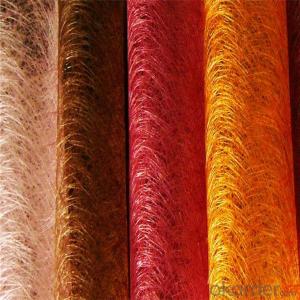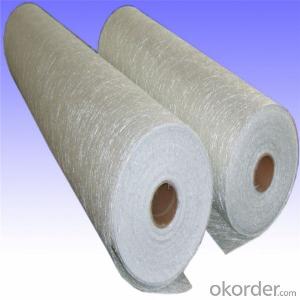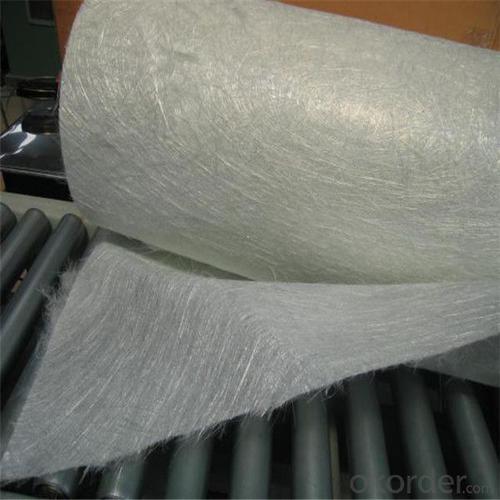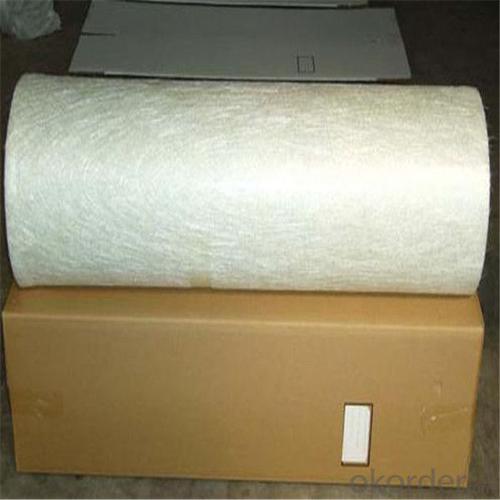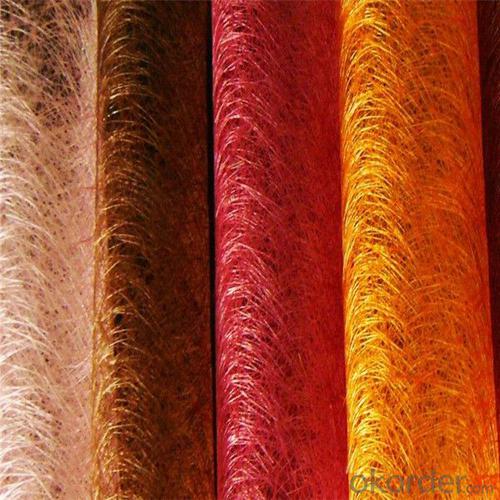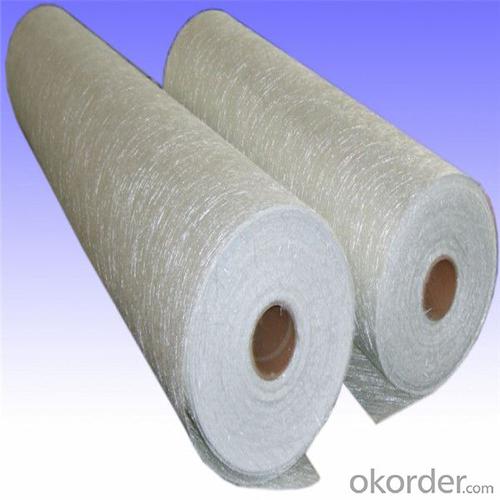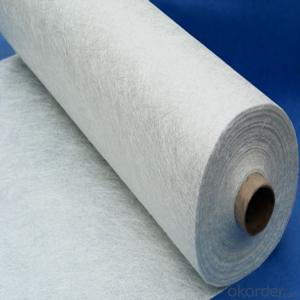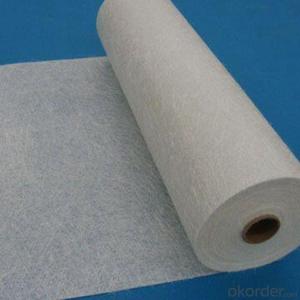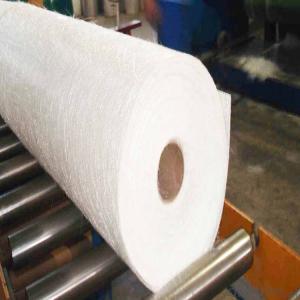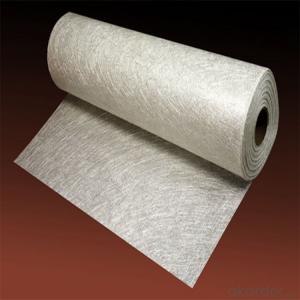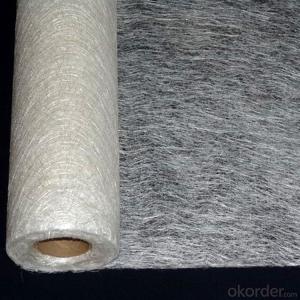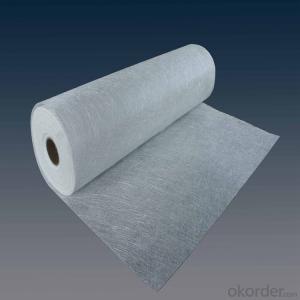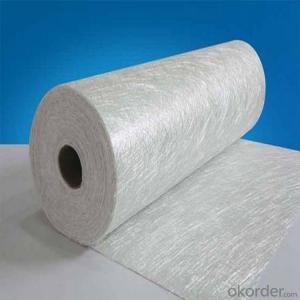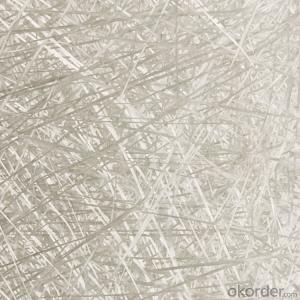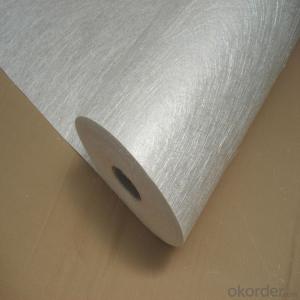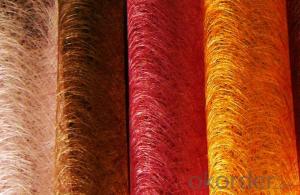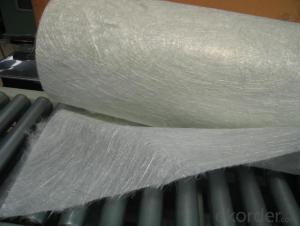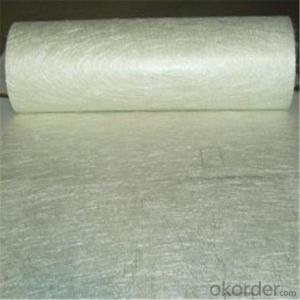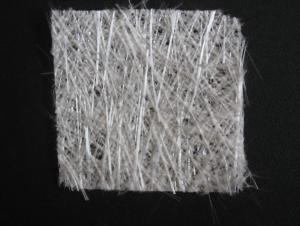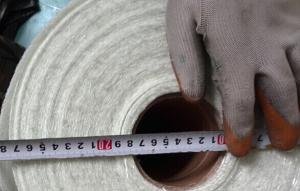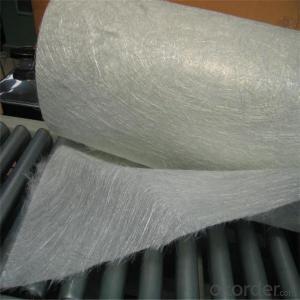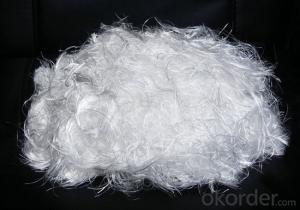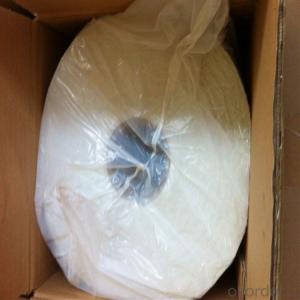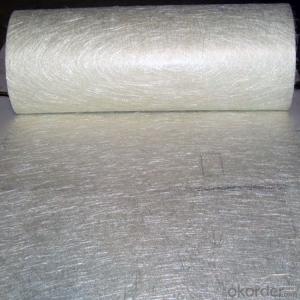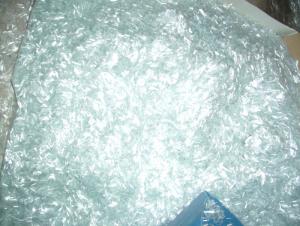Fiberglass Chopped Strand Powder Chopped Stand Mats
- Loading Port:
- Tianjin
- Payment Terms:
- TT OR LC
- Min Order Qty:
- 100 m.t.
- Supply Capability:
- 100000 m.t./month
OKorder Service Pledge
OKorder Financial Service
You Might Also Like
Quick Details
| Technique: | Chopped Strand Fiberglass Mat (CSM) | Dimensions: | 225g/m2-900g/m2 | Fiberglass Type: | E-Glass |
| Place of Origin: | China (Mainland) | Brand Name: | cnbm | Model Number: | 300G-900G |
| moisture: | ≤0.2% | combustion content: | 2.1-6.3% | binder type: | emulsion or powder |
| width: | 1040,1270,2080mm |
Packaging & Delivery
| Packaging Details: | plastic bag then carton then pallet |
| Delivery Detail: | 15 days after payment |
Advantage
1. Chopped strand mat is made up from fiberglass chopped strands bonded with powder binder or emulsion binder
2. Wet out faster and easy of handling
3. Good choppability
4.thickness uniformity
Apllication
fiberglass chopped strand mat
It is used for processing and manufacturing FRP products with getting through hand lay up process, filament winding process and press molding. Typical products is including bathroom accessories, pipe, building material, automobile, furniture, vessel, cooling towers and other FRP products
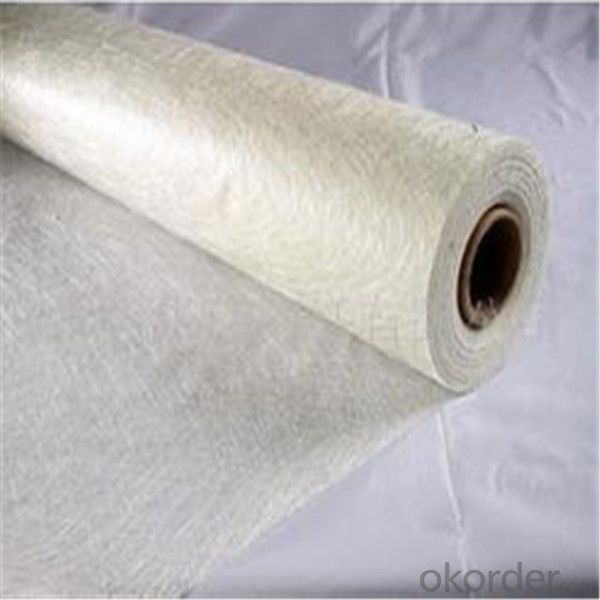
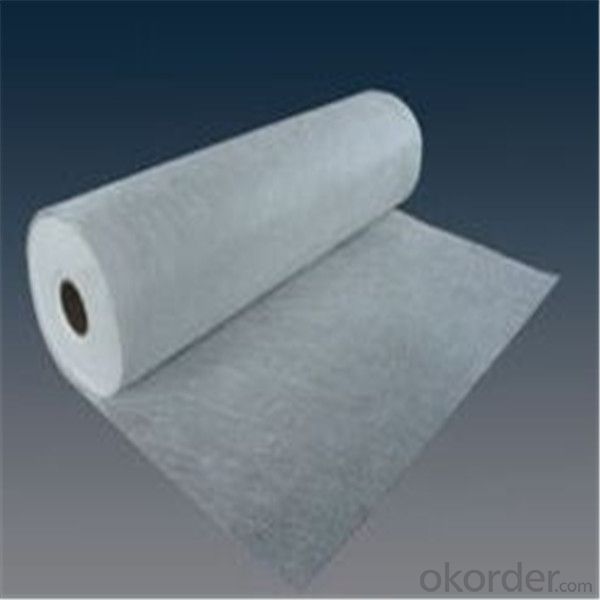
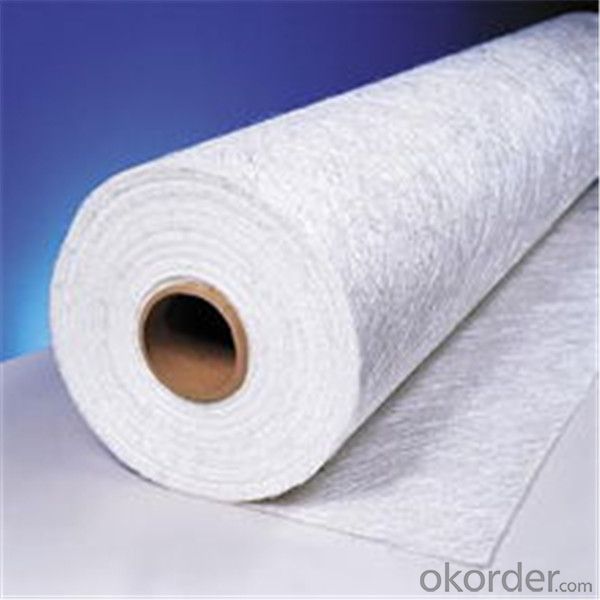
- Q: What is the difference between the ferte and shortcoming of the carbon fiber?
- Basically it does not increase the component section, and the increase of the self weight of structures can be ignored, which can ensure it can work with the original reinforced concrete members together and get good reinforcing effect. It is widely used in building structure reinforcement. 2 convenient construction: It boasts less occupied site, no need of large machines, no construction, no fire, no fixed site facilities, high construction efficiency. 3 high durability: It does not rust, and is very suitable for using in high acid, alkali, salt and corrosion environment. Also it has the ferte of high anti fatigue strength, wear resistance, anti-aging, etc.. The characteristics of carbon fiber composite material is a lightweight and high-strength, but processing is difficult. There are great differences among the carbon fiber production which adapt difernent technology, so as to the differences between different trade marks. But it certainly is in terms of strength, toughness and corrosion resistance are higher than the Aluminum Alloy steel and carbon fiber products. Once the damage is hard to repair, such as a piece of carbon fiber composite plate cracking, it must be replaced by a whole plate, but it can not be repaired by welding and other ordinary methods.
- Q: Is fiberglass chopped strand suitable for sports equipment manufacturing?
- Yes, fiberglass chopped strand is suitable for sports equipment manufacturing. It provides excellent strength, durability, and lightweight properties, making it ideal for producing sports equipment such as hockey sticks, bicycles, and tennis rackets. The fiberglass reinforcement enhances the performance and longevity of the sports equipment, making it a popular choice in the industry.
- Q: What are the different forms of fiberglass chopped strand available?
- There are multiple options available in the market when it comes to fiberglass chopped strand. These options include: 1. Chopped strand mat (CSM): CSM is a fabric made of randomly distributed chopped strands held together by a binder. It is commonly used in hand lay-up processes and is ideal for flat or slightly curved surfaces. 2. Chopped strand continuous roving (CSCR): This form consists of continuous strands of fiberglass chopped into shorter lengths. CSCR is often utilized in filament winding, pultrusion, and compression molding processes, offering excellent mechanical properties and high strength. 3. Chopped strand mat with a polyester veil (CSM-PV): This type of chopped strand mat comes with an additional layer of polyester veil on one side. It provides an improved surface finish and reduced print-through compared to regular CSM, making it suitable for applications that require a smoother appearance. 4. Chopped strand designed for thermoplastics: This type of fiberglass chopped strand is specifically developed for thermoplastic applications like injection molding or extrusion processes. These strands are typically coated with a sizing that enhances adhesion with the thermoplastic matrix. 5. Chopped strand formulated for thermosets: This kind of fiberglass chopped strand is formulated for use in thermosetting resin systems such as polyester, epoxy, or vinyl ester. These strands have a sizing agent that ensures good wet-out and adhesion to the resin, providing proper reinforcement. 6. Chopped strand for concrete reinforcement: Specialized fiberglass chopped strands are used to reinforce concrete structures. These strands are typically alkali-resistant to withstand the alkaline environment of concrete, enhancing the durability and strength of the composite material. 7. Chopped strand for insulation: Fiberglass chopped strands specifically designed for thermal and acoustic insulation applications. These strands are often processed into insulation batts, blankets, or loose-fill products, offering excellent heat and sound insulation properties. To determine the most suitable form of chopped strand for your specific needs, it is important to consider the requirements of your application and consult with a fiberglass supplier or manufacturer.
- Q: How does the manufacturing process of fiberglass chopped strand impact its quality?
- The manufacturing process of fiberglass chopped strand plays a significant role in determining the quality of the final product. Several factors influence the quality of fiberglass chopped strand during the manufacturing process. Firstly, the selection of high-quality raw materials is crucial. The fiberglass used should be of premium quality and have consistent properties. The choice of resin used to bind the fibers together also affects the overall strength and durability of the chopped strand. The manufacturing process should involve proper cutting techniques to achieve the desired length of the chopped strand. The cutting process must be precise and uniform to ensure consistent quality throughout the product. Any inconsistency in the length of the strands can result in variations in strength and performance. The alignment of the fibers is another critical aspect. The manufacturing process should ensure that the fibers are properly dispersed and aligned in a consistent manner. This alignment affects the mechanical properties of the chopped strand, such as tensile strength and stiffness. The curing process is also essential in determining the quality of the final product. Adequate curing time and temperature should be maintained to ensure proper bonding of the fibers and resin. Insufficient or excessive curing can lead to weakened bonds and reduced performance. Furthermore, quality control measures should be in place throughout the manufacturing process. Regular testing and inspection of the chopped strand for various properties, such as tensile strength, moisture content, and fiber distribution, help identify any deviations from the desired quality standards. Overall, the manufacturing process of fiberglass chopped strand significantly impacts its quality. Proper selection of raw materials, precise cutting techniques, uniform fiber alignment, appropriate curing, and rigorous quality control measures all contribute to ensuring a high-quality final product.
- Q: Can fiberglass chopped strand be used for sound insulation?
- Indeed, sound insulation can be achieved by employing fiberglass chopped strand. Owing to its remarkable sound absorption characteristics, fiberglass is extensively utilized for soundproofing purposes. When properly installed, the utilization of fiberglass chopped strand aids in diminishing noise transmission and enhancing acoustic insulation within structures. Its versatility allows for application in diverse areas, including walls, ceilings, floors, and HVAC systems, effectively dampening sound and creating a more tranquil atmosphere. Furthermore, the lightweight nature, flexibility, and straightforward installation process of fiberglass chopped strand contribute to its widespread preference in sound insulation ventures.
- Q: Is fiberglass chopped strand suitable for architectural applications?
- Architectural applications can benefit greatly from the use of fiberglass chopped strand. This versatile material offers numerous advantages and is well-suited for architectural purposes. It is lightweight, strong, durable, and resistant to corrosion, making it an excellent choice for a variety of architectural components. When it comes to architectural applications, fiberglass chopped strand has a wide range of uses. It can be used to reinforce architectural panels, walls, and ceilings, providing additional strength and stability. Furthermore, fiberglass can be molded into different shapes and forms, allowing architects to explore creative design possibilities. Architects can also utilize fiberglass chopped strand to create distinctive architectural features like columns, domes, and arches. Its malleability enables it to be easily shaped and formed into intricate designs, offering architects the flexibility to create visually appealing structures. Another advantage of fiberglass chopped strand is its resistance to fire and chemicals. This makes it suitable for architectural applications where fire and chemical resistance are crucial factors to consider, especially in industrial or commercial buildings. Moreover, fiberglass chopped strand is a cost-effective alternative to materials like steel or concrete. It requires less maintenance and has a longer lifespan, making it a cost-efficient choice for architectural projects. In conclusion, fiberglass chopped strand is an ideal material for architectural applications due to its lightweight nature, strength, durability, corrosion resistance, fire resistance, chemical resistance, and cost-effectiveness. Its versatility and ability to be molded into various shapes and forms make it an excellent choice for architectural components and features.
- Q: What are the transportation considerations for fiberglass chopped strand?
- Transportation considerations for fiberglass chopped strand include ensuring proper packaging and securing the material to prevent damage during transit. Fiberglass chopped strand is typically packaged in bags or boxes, and it is important to choose packaging that is sturdy enough to withstand the rigors of transportation. In addition to packaging, it is essential to secure the fiberglass chopped strand properly to prevent shifting or movement during transport. This can be done by using straps or other secure fastening methods to hold the packages in place within the transportation vehicle. Another consideration is the weight and size of the fiberglass chopped strand packages. It is important to accurately estimate the weight and dimensions of the packages to ensure compliance with weight restrictions and to determine the appropriate type of transportation vehicle needed. Furthermore, it is crucial to consider any special handling requirements for fiberglass chopped strand during transportation. This may include protecting the material from extreme temperatures, moisture, or other environmental factors that could potentially impact its quality. Lastly, it is important to be aware of any regulations or guidelines that govern the transportation of fiberglass chopped strand. This could include compliance with hazardous materials regulations, if applicable, or following specific shipping requirements mandated by regulatory bodies. By considering these transportation considerations, it is possible to ensure the safe and efficient transportation of fiberglass chopped strand, minimizing the risk of damage or loss during transit.
- Q: How is fiberglass chopped strand used in the oil and gas industry?
- Fiberglass chopped strand is commonly used in the oil and gas industry for various applications due to its excellent mechanical and thermal properties. It is primarily used as a reinforcement material in the fabrication of composite components and structures. One of the main uses of fiberglass chopped strand in the oil and gas industry is for the manufacturing of corrosion-resistant pipes and tubing. These pipes are subjected to harsh environmental conditions, including the presence of corrosive substances such as oil, gas, and chemicals. By adding fiberglass chopped strand to the polymer matrix of the pipes, it significantly enhances their resistance to corrosion, extending their service life and reducing the need for frequent replacements. Moreover, fiberglass chopped strand is also utilized in the production of storage tanks, vessels, and containers used in the oil and gas industry. These components require high strength, durability, and resistance to extreme temperatures and pressures. By incorporating chopped strand into the composite matrix, it reinforces the structural integrity of these products, making them capable of withstanding the demanding conditions encountered in the oil and gas sector. Additionally, fiberglass chopped strand is employed in various other applications such as insulation materials, gaskets, seals, and electrical components within the oil and gas industry. Its thermal insulation properties make it an ideal choice for insulating pipelines and equipment, preventing heat loss or gain and maintaining the desired temperature during the transportation or processing of oil and gas. In summary, fiberglass chopped strand plays a crucial role in the oil and gas industry by reinforcing composite materials used in pipes, tanks, insulation, and other components. Its exceptional mechanical strength, corrosion resistance, and thermal insulation properties make it a preferred choice for enhancing the performance and durability of crucial infrastructure and equipment in this sector.
- Q: Can fiberglass chopped strand be used for reinforcing concrete?
- Fiberglass chopped strand is indeed suitable for reinforcing concrete. It comprises glass fibers that are chopped into shorter lengths and incorporated into the concrete mix. By doing so, these fibers effectively amplify the concrete's overall robustness, longevity, and crack resistance. Moreover, they contribute to managing shrinkage and minimizing crack formation. In addition to being lightweight, fiberglass chopped strand boasts corrosion resistance and outstanding performance in challenging surroundings. Consequently, it is frequently employed in various concrete applications such as slabs, walls, precast elements, and shotcrete.
- Q: Can fiberglass chopped strand be used in electrical grounding applications?
- No, fiberglass chopped strand should not be used in electrical grounding applications. Fiberglass is a non-conductive material, meaning it does not conduct electricity. In electrical grounding applications, a conductive material is required to ensure the safe dissipation of electrical charges. Copper or other metals are typically used for this purpose as they have good electrical conductivity.
Send your message to us
Fiberglass Chopped Strand Powder Chopped Stand Mats
- Loading Port:
- Tianjin
- Payment Terms:
- TT OR LC
- Min Order Qty:
- 100 m.t.
- Supply Capability:
- 100000 m.t./month
OKorder Service Pledge
OKorder Financial Service
Similar products
Hot products
Hot Searches
Related keywords
